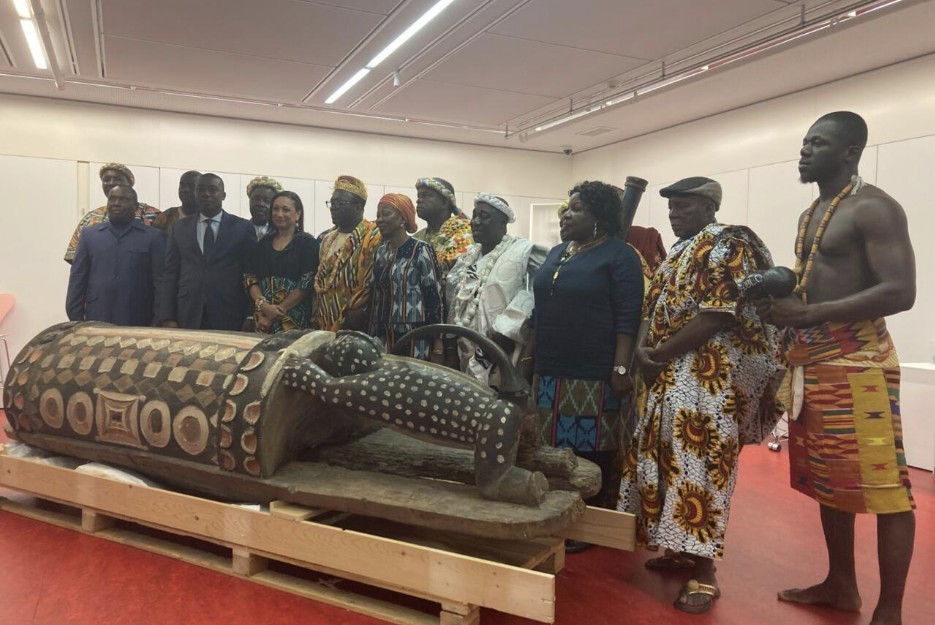50 Years On: The Legacy of the Cambodian Genocide
- Ella Browning
- Apr 17
- 3 min read
Updated: Jun 6

“The dead are crying out for justice.”
– Dith Pran, survivor of the Cambodian Genocide
Three hundred mass burial sites. Nineteen thousand burial pits. Between 1.5 to 3 million people died as a result of the Khmer Rouge regime. One in four Cambodians. This is the legacy left by genocide: broken homes, families torn apart, millions dead. The atrocities committed by the Khmer Rouge between 1975 and 1979 have had a lasting impact on the country, forever shaping the collective memory of Cambodia.
Today marks 50 years since the Cambodian Genocide commenced.
On 17 April 1975, the Cambodian Civil War came to an end, Cambodia’s capital, Phnom Penh fell, and the Khmer Rouge seized control of Cambodia. Over the next four years, the regime attempted to transform Cambodia into an agrarian communist utopia as envisioned by their leader, Pol Pot. The result? Mass executions, forced labour, starvation and torture. This political extremism was allowed to take hold in Cambodia by the anger and fear fed by Operation Menu. A covert US bombing campaign designed to drive out North Vietnamese forces in Cambodia, it contributed to the eventual rise of the totalitarian regime.
Cambodia became a classless society. Private property was abolished. Currency ceased to exist. Individuality was suppressed. Families were forcibly relocated from urban centres to the countryside to work on collectivised farms, leading to widespread famine. The regime systematically targeted perceived enemies – intellectuals, professionals and minorities – resulting in mass killings across the country, land now remembered as the Killing Fields.
Vietnamese intervention brought about the end of Pol Pot’s reign. Responding to invasions by the Khmer Rouge, Vietnam invaded Cambodia in December 1978 and by January 7 1979, the ultra-communist party was overthrown. Despite this, they remained a threat in the region for many years to come, continuing to impact the lives of Cambodians.
Peace in Cambodia was achieved by the adoption of the Cambodian Constitution in 1993, following the Paris Peace Accords that ended the twelve year civil war in Cambodia. Recognising the “sufferings and destructions” they had endured as a people, the Constitution ensures the protection of human rights and that the power of the nation belongs with the people. With this, Cambodia became a constitutional monarchy and for the first time democratic elections were held. Whilst this marked a significant step towards peace, stability and the codification of the rule of law, the reality is not so sanguine. Challenges to the maintenance of this peace remain as a result of persistent political instability, major human rights violations and the ongoing legacy of the genocide and conflict.
Following too many years of impunity, 2003 finally saw the establishment of an ad-hoc, hybrid tribunal to address the mass atrocities and crimes against humanity committed by the Khmer Rouge: the Extraordinary Chambers in the Courts of Cambodia (ECCC). A joint venture between the Cambodian Government and the United Nations, the ECCC was tasked with bringing justice and accountability to the leaders of the Khmer Rouge regime.
The search for post-conflict justice, however, has faced many challenges. Due to the slow pace of its trials, corruption and the reported $330 million dollar cost of the proceedings, the ECCC has been surrounded by much controversy and has faced questions about its effectiveness. Today, of the five leaders indicted, three have been convicted, and Khieu Samphan is the only surviving leader, currently serving a life sentence. Pol Pot, however, died in 1998 without ever facing justice.
So, 50 years on, have those cries finally been heard?
Turning to today, collectively, we agreed ‘never again’. But, in the face of Darfur, Myanmar, and increasing accusations of genocide being levied in Gaza, the growing accusation against the international system is this: the promise of ‘never again’ has never felt so weak.





Comments